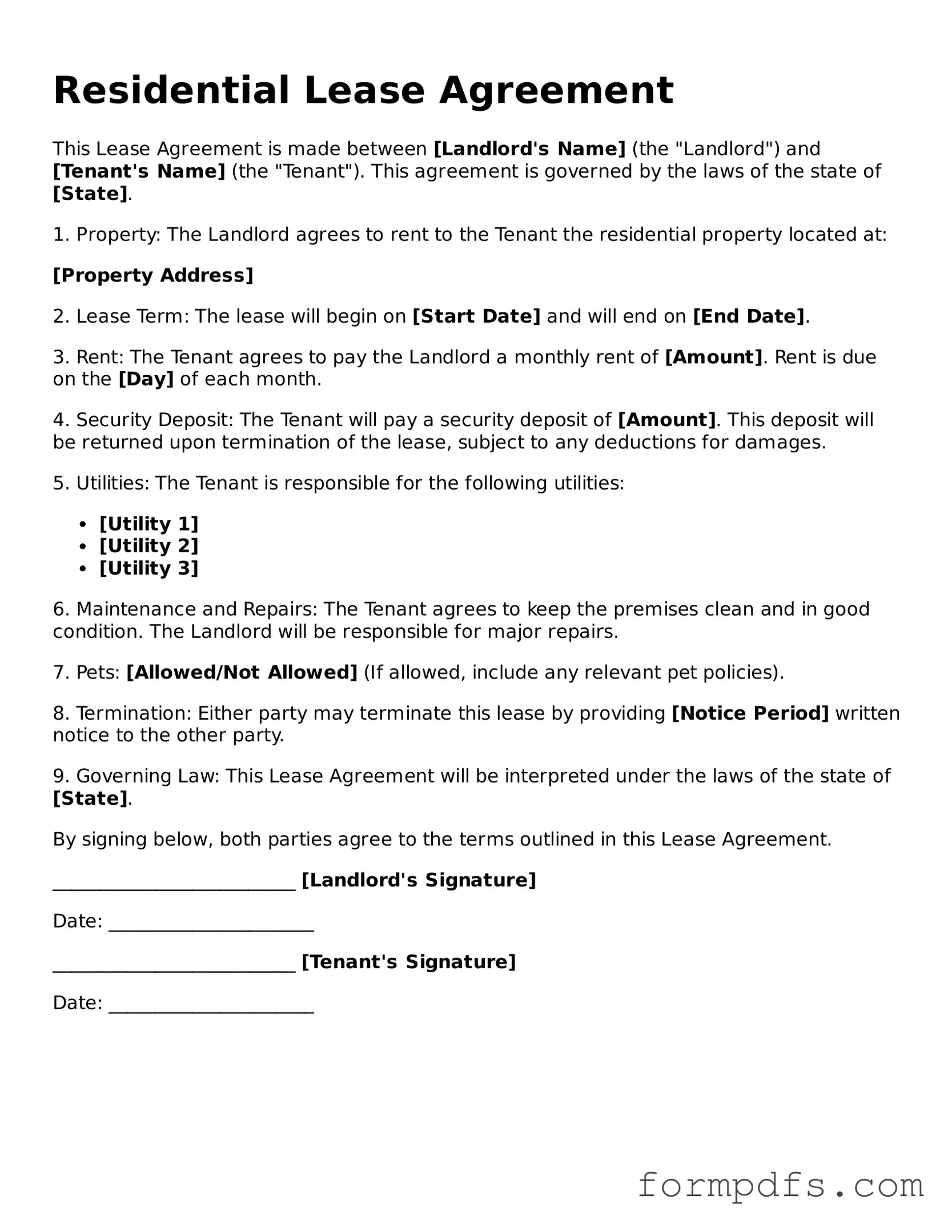What is a Lease Agreement?
A Lease Agreement is a legal document between a landlord and a tenant. It outlines the terms and conditions under which the tenant can occupy the property. This includes details like the rental amount, duration of the lease, and responsibilities of both parties.
What should I include in a Lease Agreement?
Important details to include are the names of the landlord and tenant, property address, lease term, rent amount, payment due dates, security deposit information, and rules regarding pets or maintenance. Clear terms help prevent misunderstandings later.
How long is a typical Lease Agreement?
Lease Agreements can vary in length. They often range from six months to one year. Some leases can be month-to-month. The duration should be agreed upon by both the landlord and tenant, and it should be clearly stated in the document.
Can a Lease Agreement be modified?
Yes, a Lease Agreement can be modified, but both parties must agree to any changes. It’s best to put any modifications in writing and have both the landlord and tenant sign the updated agreement. This helps keep everything clear and documented.
What happens if I break the Lease Agreement?
If a tenant breaks the Lease Agreement, they may face penalties. This could include losing the security deposit or owing rent for the remaining lease term. It’s important to read the agreement carefully to understand the consequences of breaking it.
Do I need a lawyer to create a Lease Agreement?
While it’s not required to have a lawyer, it can be helpful. A legal professional can ensure that the agreement meets local laws and protects your interests. However, many landlords and tenants successfully use templates and customize them to fit their needs.
What should I do if I have a dispute regarding the Lease Agreement?
If a dispute arises, it’s best to communicate openly with the other party first. If that doesn’t resolve the issue, consider mediation or legal advice. Keeping a record of all communications can be helpful if the situation escalates.
